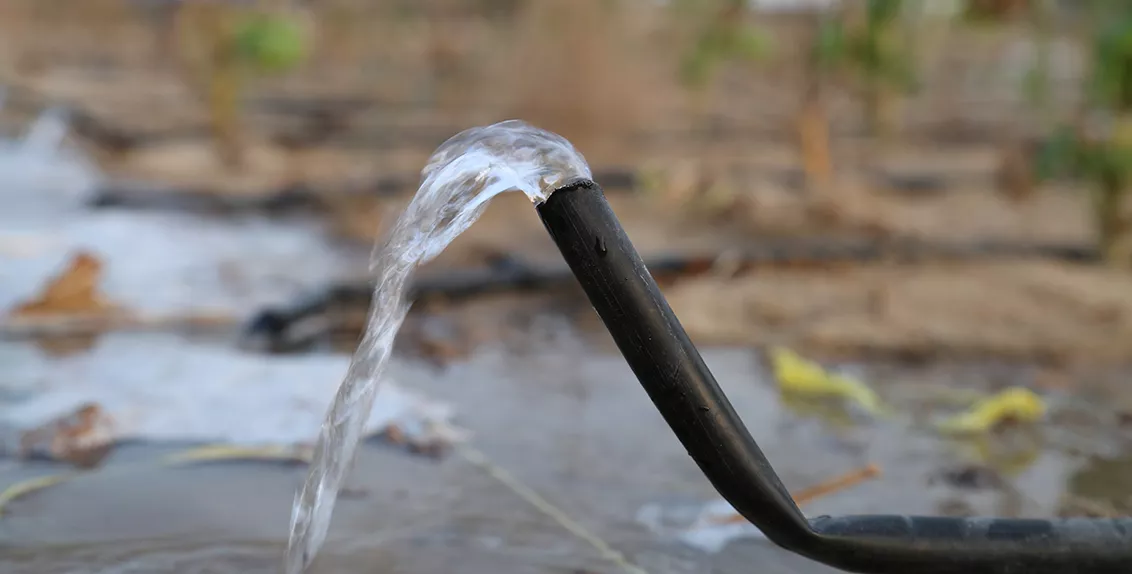Study sheds new light on water-energy nexus in lift irrigation schemes in Central Asia
20 June 2021
A recent study by a team of scientists in Uzbekistan gives new insights into the water-energy nexus in lift irrigation schemes in Central Asia and how they could be managed sustainably.
Published in Renewable and Sustainable Energy Reviews (a journal with an impact factor of 14.98), the study presents some interesting results that can have regional implications. Tashkent Institute of Irrigation and Agricultural Mechanization Engineers; the Amu-Kashkadarya Basin Irrigation Water Administration, Uzbekistan; the Ministry of Water Management of Uzbekistan; and the International Center for Biosaline Agriculture (ICBA) contributed to the study.
In lift irrigation, external power, including fuel-based or electricity-powered pumps or other mechanical means, is used to transport water from different sources to reservoirs, from where it is used for agriculture and other purposes. These schemes occupy more than 50 percent of the irrigated land in Uzbekistan and 40 percent in Tajikistan across the Aral Sea basin.
The study highlights direct and indirect negative impacts due to the shift from using hydropower to thermal power supply for lift irrigation. It shows that there is a growing competition for water usage between agriculture and energy generation. Due to inadequate cooperation among countries over transboundary river basins, problems along the agriculture-energy nexus are also on the rise. For example, separating downstream countries from upstream hydropower generation is resulting in the development of alternative water and energy sources to accommodate the high demand for water resources.
Apart from causing water scarcity issues, this approach also accelerates the depletion of fossil energy resources and increases greenhouse gas emissions, therefore complicating the overall management of water resources at the national level.
Under these conditions, the critical strategy for better water management is to increase water and energy efficiency and productivity, including the adoption of renewable energy such as solar, wind and hydroelectric power, and to shift from conventional furrow irrigation to groundwater-based drip irrigation. This approach can bring various benefits such as saving water and energy; increasing crop yields; reducing the use of fossil fuel resources; decreasing carbon dioxide emissions and return flow.
Moreover, the study indicates that practices like using brackish groundwater for irrigation could be an option to address water scarcity in lift irrigation zones.
According to Dr. Aziz Karimov, Head of ICBA’s Regional Office for Central Asia and the South Caucasus and co-author of the study: “While many other studies have focused on the benefits of energy and water conservation through micro-irrigation technology or the use of groundwater to compensate for water scarcity, this study examines managed aquifer recharge, and the use of brackish groundwater to compensate for water scarcity caused by increased water demand from agriculture and electricity generation. Overall, we focused on two key objectives in this study: evaluate transboundary water-energy nexus effects on emerging water and energy issues; and examine aquifer storage and recovery and drip irrigation in lift irrigation areas for more productive use of water and energy resources. In particular, we explored the combination of aquifer storage and recovery and drip irrigation as a way to deal with the water-energy nexus in irrigated areas that have moderately saline groundwater.”
The study concludes that despite the potential for significant improvement of water and energy productivity at the national level, there is no sustainable alternative to meet the increasing demands of the population and environment other than benefit-sharing in water and energy and strengthening cooperation across rivers basins in Central Asia.











